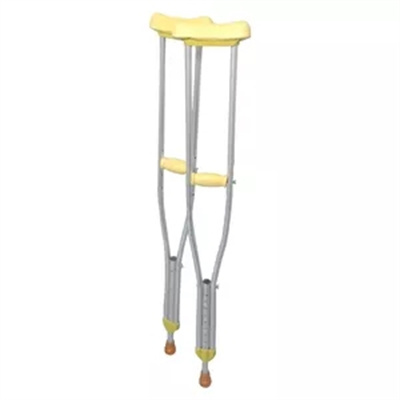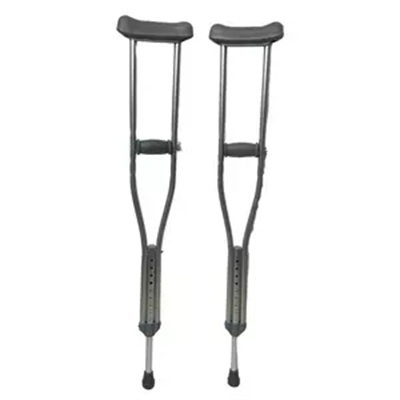Crutches can be used for both temporary and permanent mobility needs, but their suitability may vary depending on the individual’s specific circumstances and long-term requirements. Here’s a comparison of using crutches for temporary and permanent mobility needs:
Temporary Mobility Needs:
- Injury Recovery: Crutches are often used temporarily by individuals recovering from injuries such as fractures, sprains, or surgeries. They provide temporary support and assistance during the healing process.
- Short-Term Rehabilitation: For short-term rehabilitation needs, crutches can be an effective choice to maintain mobility while the individual works on regaining strength and function.
- Non-Weight Bearing: Crutches are particularly useful for situations where the person needs to avoid putting weight on one or both lower limbs for a limited time.
- Adjustment Period: Crutches can serve as an interim solution for individuals who are adjusting to mobility aids or prosthetic devices before finding a more permanent solution.
- Minimal Adaptations: Temporary crutch use may require fewer home modifications and lifestyle changes compared to long-term or permanent mobility solutions.
- Cost-Effective: For short-term use, crutches are a cost-effective mobility option compared to more specialized devices or assistive technology.
Permanent Mobility Needs:
- Chronic Conditions: For individuals with chronic or permanent mobility limitations due to conditions like osteoarthritis, neuromuscular disorders, or congenital disabilities, crutches may not be the most practical long-term solution.
- Effort and Fatigue: Using crutches long-term can be physically demanding and may lead to arm, shoulder, or wrist fatigue and overuse injuries.
- Limited Mobility: Crutches may not provide the same level of mobility and independence as other mobility aids like wheelchairs, scooters, or prosthetic limbs for those with permanent disabilities.
- Adaptations Required: Long-term crutch users may need to make more extensive home modifications to ensure accessibility and safety.
- Alternative Devices: Depending on the nature and severity of the mobility impairment, individuals with permanent needs may find that wheelchairs, walkers, or prosthetic devices offer greater mobility and comfort.
- Customization: Permanent mobility solutions can often be customized to better suit the individual’s specific needs and lifestyle.
- Insurance Coverage: In many cases, insurance providers may be more willing to cover the cost of permanent mobility devices or assistive technology than temporary crutches.
Ultimately, the choice between using crutches for temporary or permanent mobility needs depends on the individual’s medical condition, prognosis, lifestyle, and personal preferences. It’s essential to consult with healthcare professionals, including physical therapists and mobility specialists, to determine the most appropriate and sustainable mobility solution for long-term use. In many cases, individuals with permanent mobility needs may explore a range of mobility aids and devices to find the best fit for their unique circumstances.




















